Eight
FIGURES OF CONTROVERSY
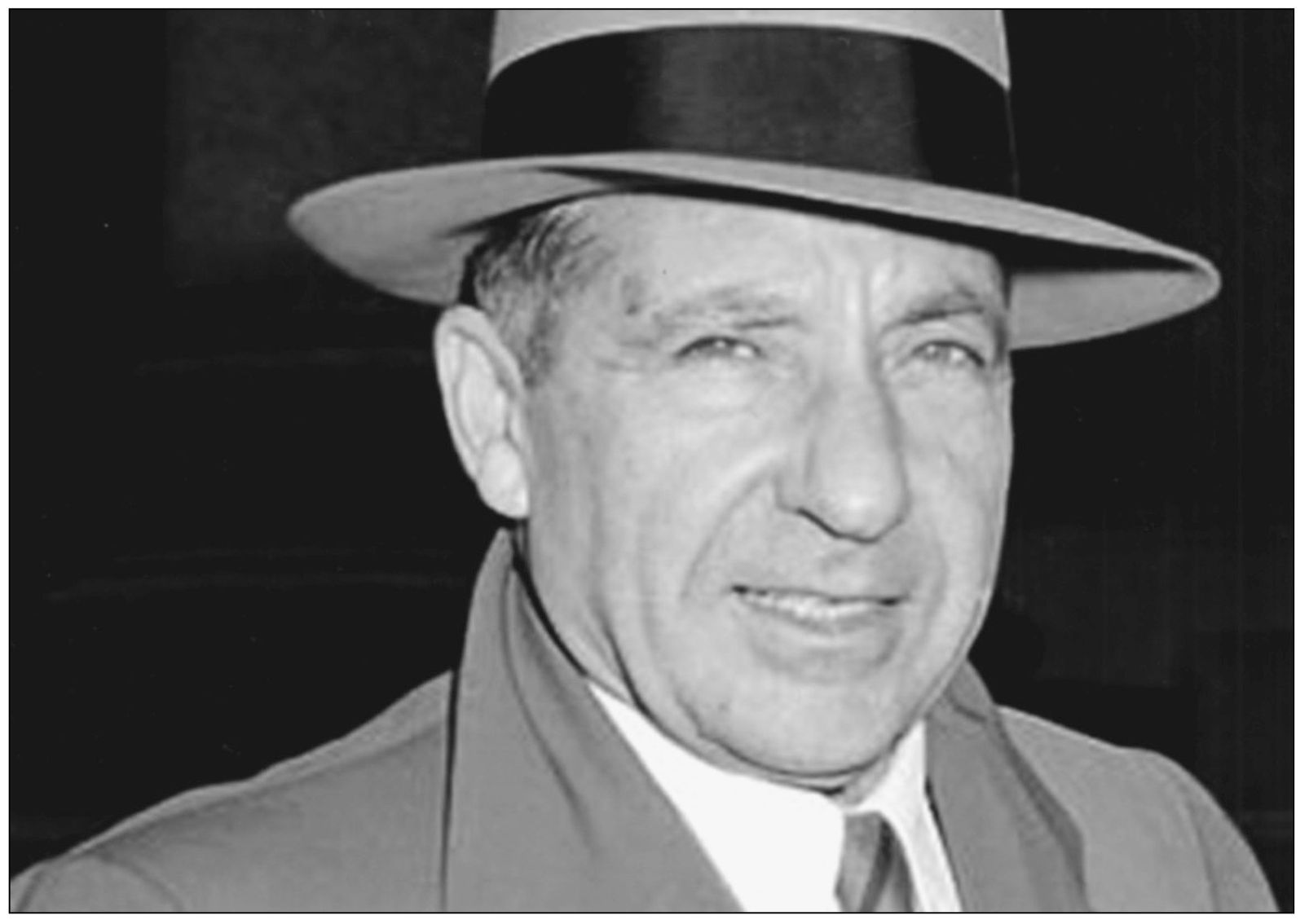
FRANK COSTELLO. Gangster Frank Costello (1891–1973) was born Francesco Castiglia in Calabria, Italy, and came to the United States around 1900; the family settled in Italian Harlem. Costello became one of the closest advisors to New York Mafia chief Charles “Lucky” Luciano. His negotiating skill and ties to politicians earned him the nickname “Prime Minister of the Underworld.”
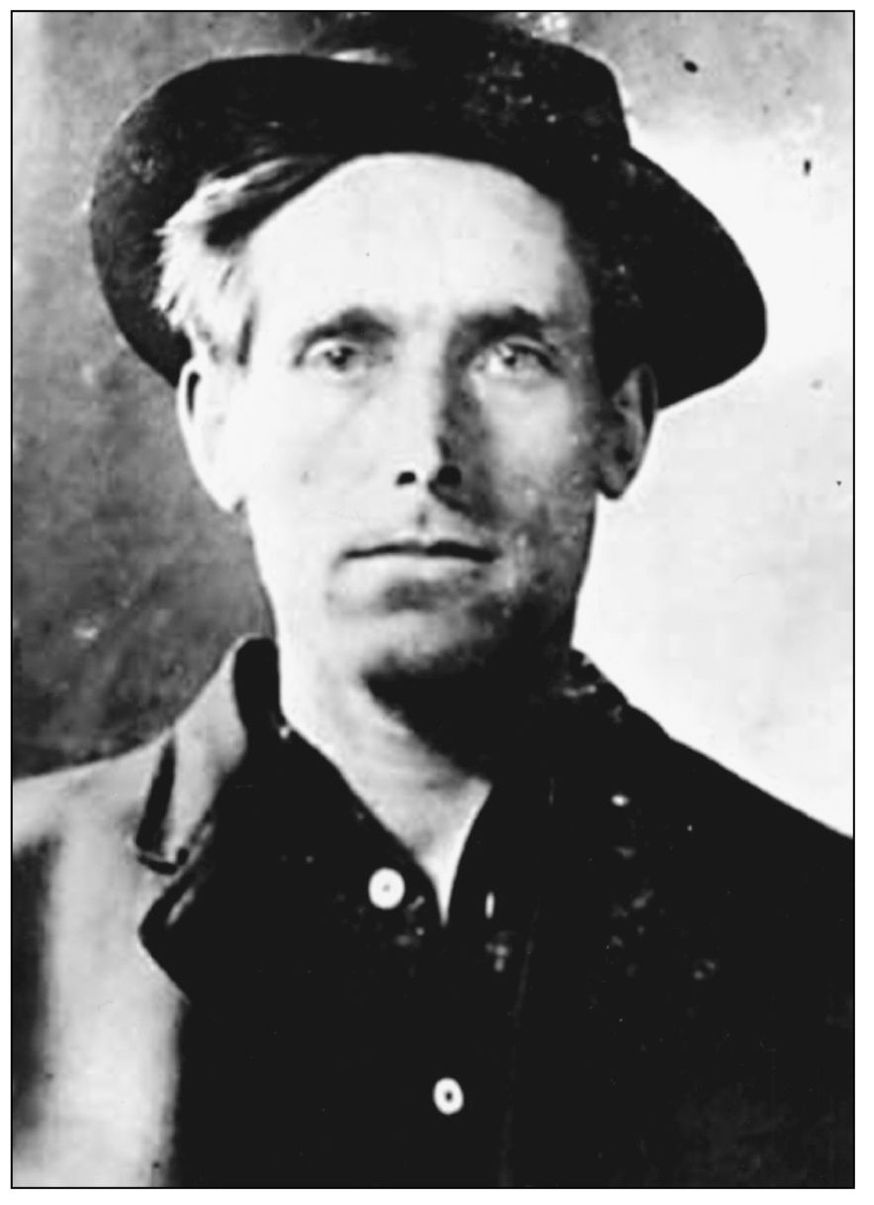
JOE HILL. Born Joel Hagglund in Gavle, Sweden, Joe Hill (1879–1915) came to the United States with his bother, Paul, in 1902 seeking work as laborers. While in California, Joe Hill (or Hillstrom) joined the International Workers of the World (Wobblies) and began gaining attention as a composer and folk singer of workers’ protest songs. Several of them were printed in the organization’s Little Red Song Book in 1911. Hill’s arrest and execution for murder in Utah created an international uproar.
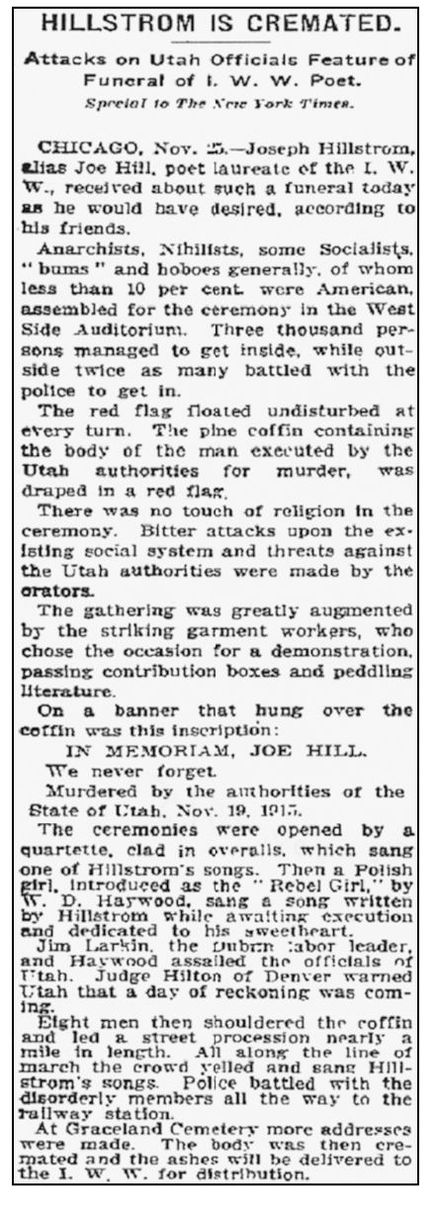

LUCKY LUCIANO. Born Salvatore Lucania in Sicily, Charles “Lucky” Luciano (1897–1962) came to the United States with his family in 1906; they settled in New York. Luciano drifted into crime and criminality from an early age and met his lifelong companions Meyer Lansky, Bugsy Siegel, and Frank Costello. In the 1920s, Luciano consolidated his position as a gang leader and eventually gained control of the New York mob. He streamlined la Cosa Nostra and redesigned it into a modernly organized American crime business. Luciano was finally convicted for running a prostitution racket and was imprisoned in Sing Sing. In 1946, he was deported to Italy. Although abroad, he remained in control of the Mafia. He died in Naples.
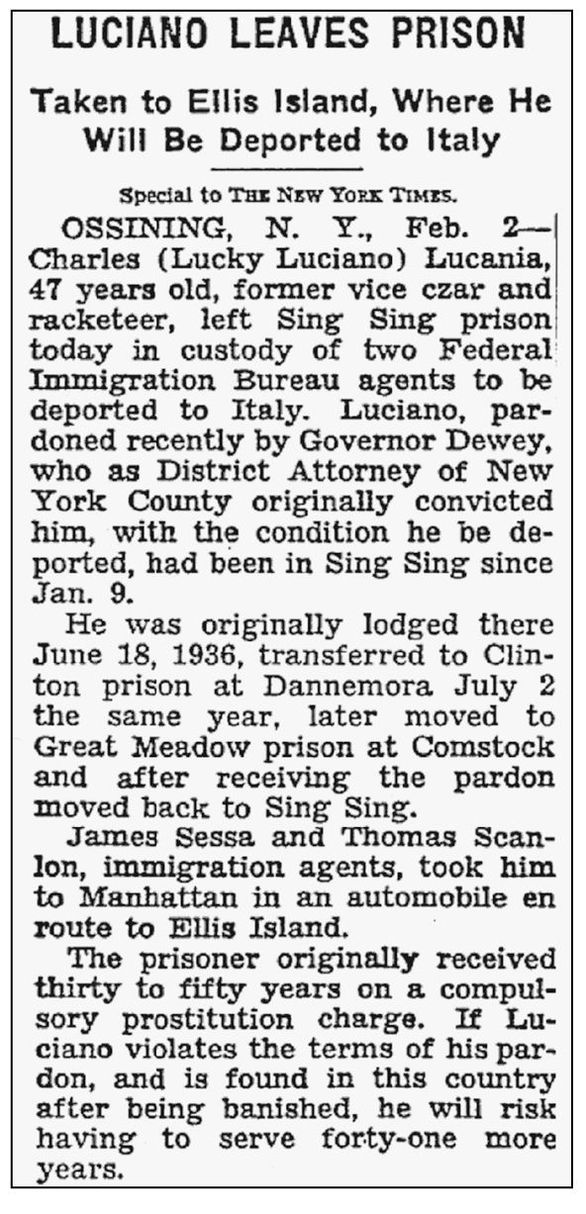

SACCO AND VANZETTI. The trial and execution of Nicola Sacco and Bartolomeo Vanzetti, two Italian immigrants, was a cause celebre during the 1920s; it underlined the real hostility that some Americans felt toward certain classes of immigrants. Vanzetti (1888–1927) was born in Villafalletto, Italy. He came to the United States as a steerage passenger on the La Provence, which sailed from Le Have, France, and arrived in New York in June 1908. Listed as a laborer, he eventually established himself as a fishmonger. He befriended Nicola Sacco, who shared his anarchist convictions. In 1927, the two were convicted of murder on circumstantial evidence and executed by the Commonwealth of Massachusetts.

CIPRIANO CASTRO. One of the most sensational detentions in Ellis Island’s history was that of Gen. Cipriano Castro (1858–1924), the former president of Venezuela. On December 31, 1912, ex-president Castro arrived as a first-class passenger on the Touraine. Orders were sent to Ellis Island’s commissioner from Washington to detain him on any pretext. American animosity toward Castro dated back to days of defiance and independent-mindedness during his presidency. At Ellis Island, former president Castro was photographed by chief clerk Augustus Sherman in his detention quarters. A board of special inquiry ordered his exclusion, and all his appeals were rejected. Finally he was ordered released by a federal court. He later settled in Puerto Rico, where he died.
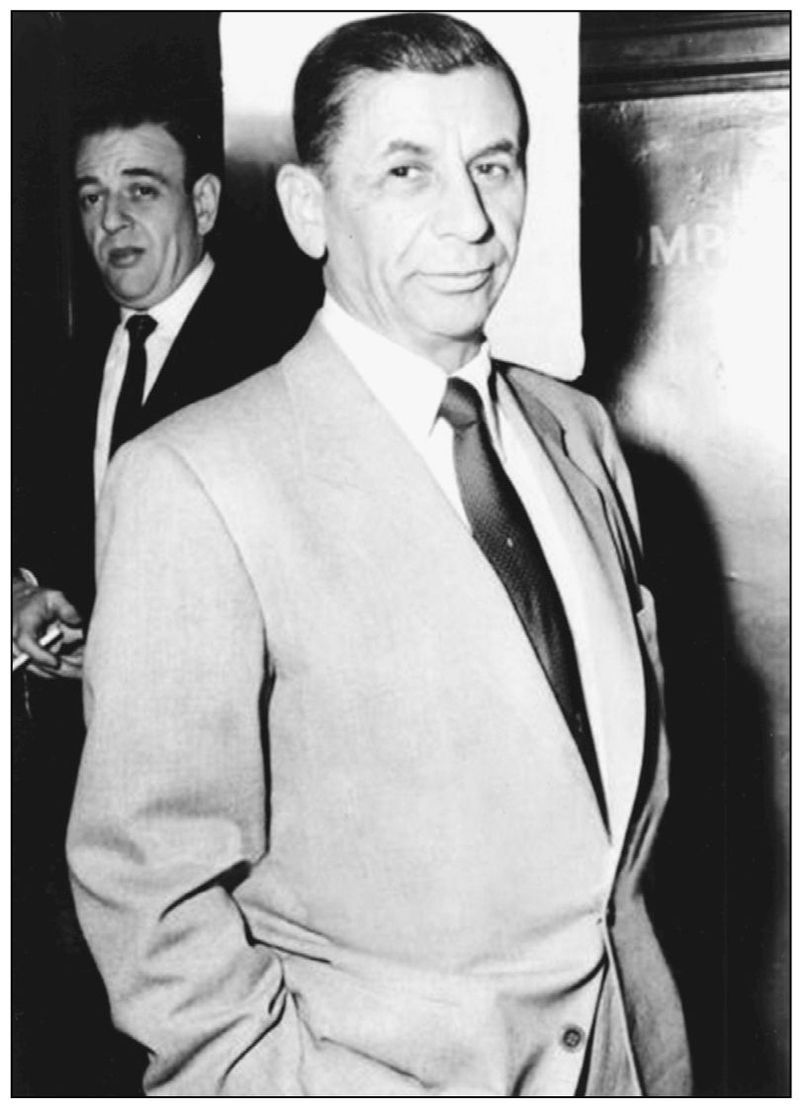
MEYER LANSKY. A Polish Jew, Meyer Lansky (1902–1983) was born in Grodno, Russia, as Majer Suchowlinski. The Suchowlinskis joined the flow of emigration in 1911 and settled in Manhattan’s Lower East Side. He and Charles “Lucky” Luciano became pals in their boyhood, and their friendship remained solid for the rest of their lives. In the 1930s, Lansky extended the mob’s criminal operations to Cuba. The photograph at left was taken in 1958.
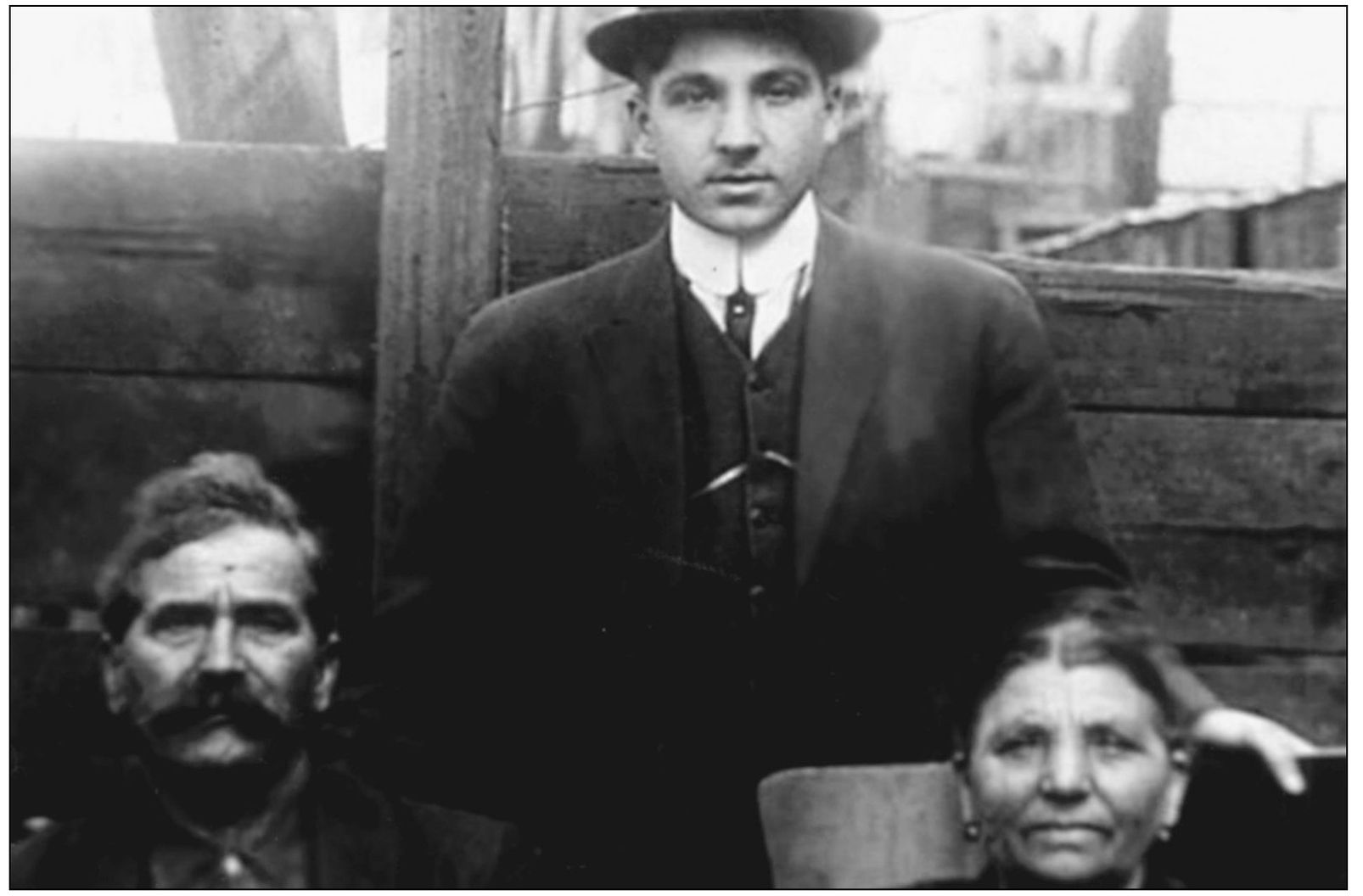
ALBERT ANASTASIA. Another member of the New York mob, Albert Anastasia (1902–1957) headed its contract killing unit, Murder, Inc. Umberto Anastasio was born in Italy, and he came to New York as a seaman in 1919. He worked along the waterfront where his murderous appetite was whetted. He became a devoted follower of Luciano and soon worked his way to the position of leader of Murder, Inc. This photograph shows him with his parents.

MARCUS MOSIAH GARVEY. The founder of the Universal Negro Improvement Association and “back to Africa” movement was born Marcus Mosiah Garvey (1887–1940) in Jamaica. He came to the United States in 1916 and settled in New York, where he introduced his ideas and founded the Black Star Steamship Line and the Negro World, a periodical. He urged African Americans to return to Africa and negotiated a settlement agreement with the Liberian government. Garvey was investigated for mail fraud, and in 1923, he was convicted and sentenced to five years imprisonment. In 1927, Pres. Calvin Coolidge commuted his sentence, and he was deported to Jamaica. He resumed his activities in Jamaica, and in 1935, he moved to England, where he died of a stroke five years later.
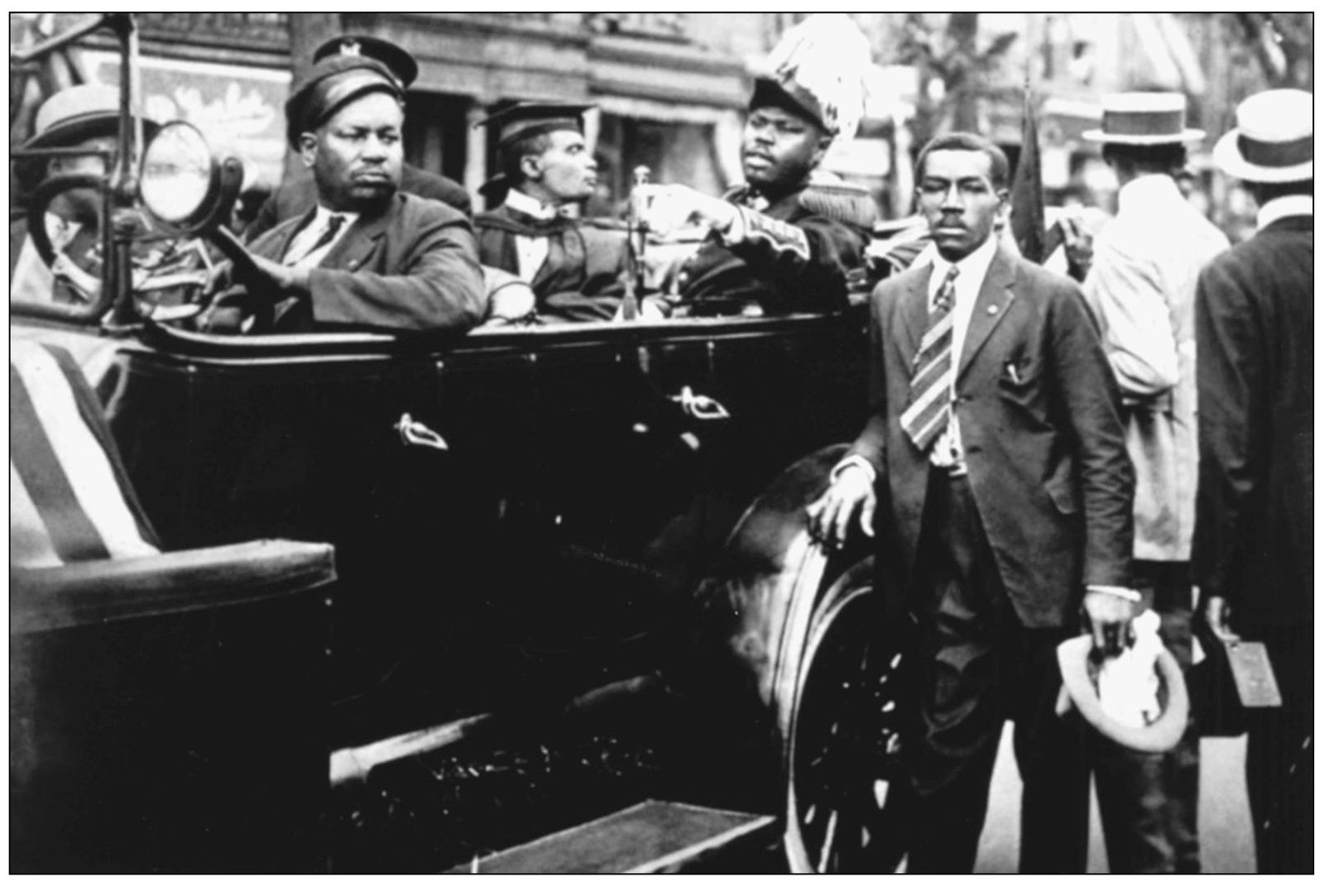

EMMA GOLDMAN. Known by her critics as “Red Emma,” Emma Goldman (1869–1940) was born in Russia (Lithuania), and she immigrated to the United States in 1885 to work in a factory. In 1889, she was converted to anarchism and went on speaking tours throughout the country. Imprisonments did not deter her, nor did threats by the police. Finally in 1919, she was arrested and brought to Ellis Island and deported to Russia.
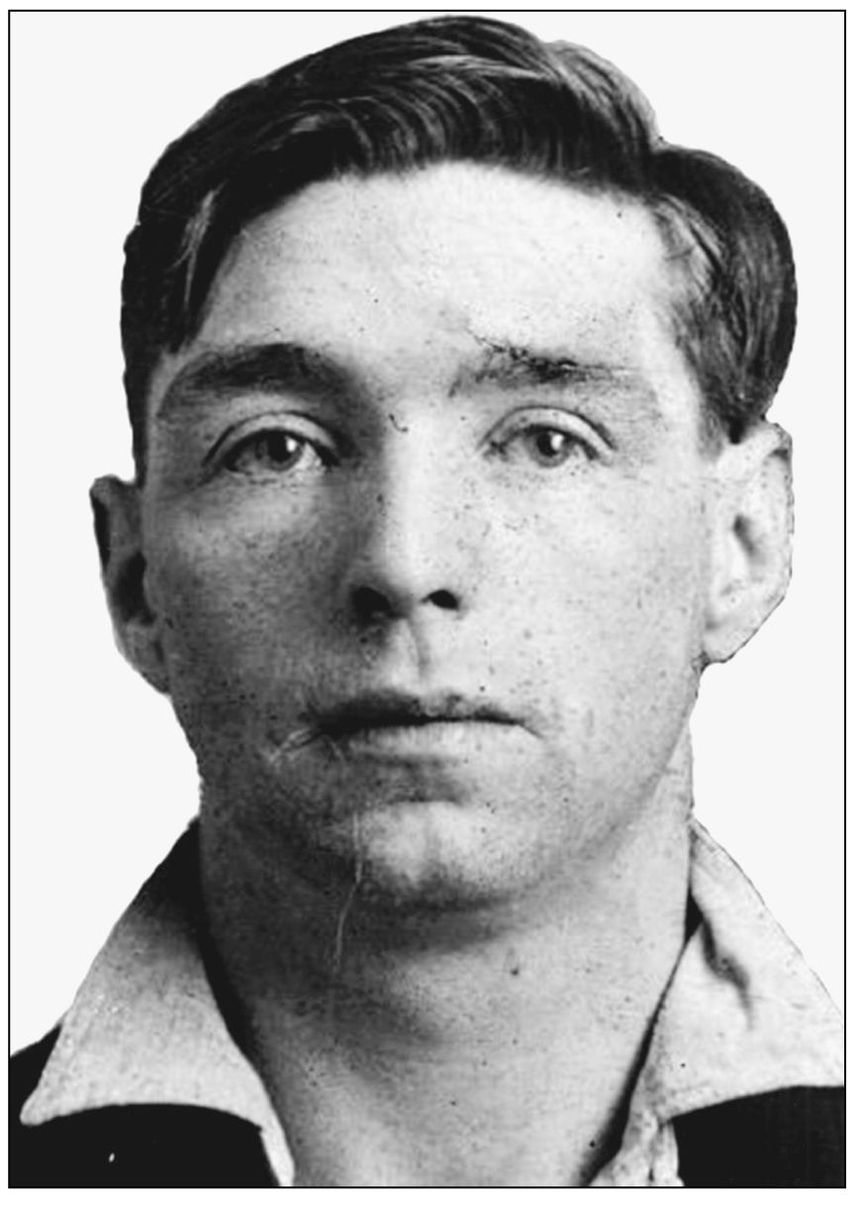
OWNEY MADDEN. Another member of the New York mob was Owen Madden (1891–1965). Madden was born in Leeds of Irish parents and left England for New York on the SS Teutonic in June 1902. In the 1920s, he ran the Cotton Club in Harlem and for years was a top boxing promoter (he managed Primo Carnera’s fights). In 1935, with things getting hot, Madden left racketeering and retired to Arkansas.
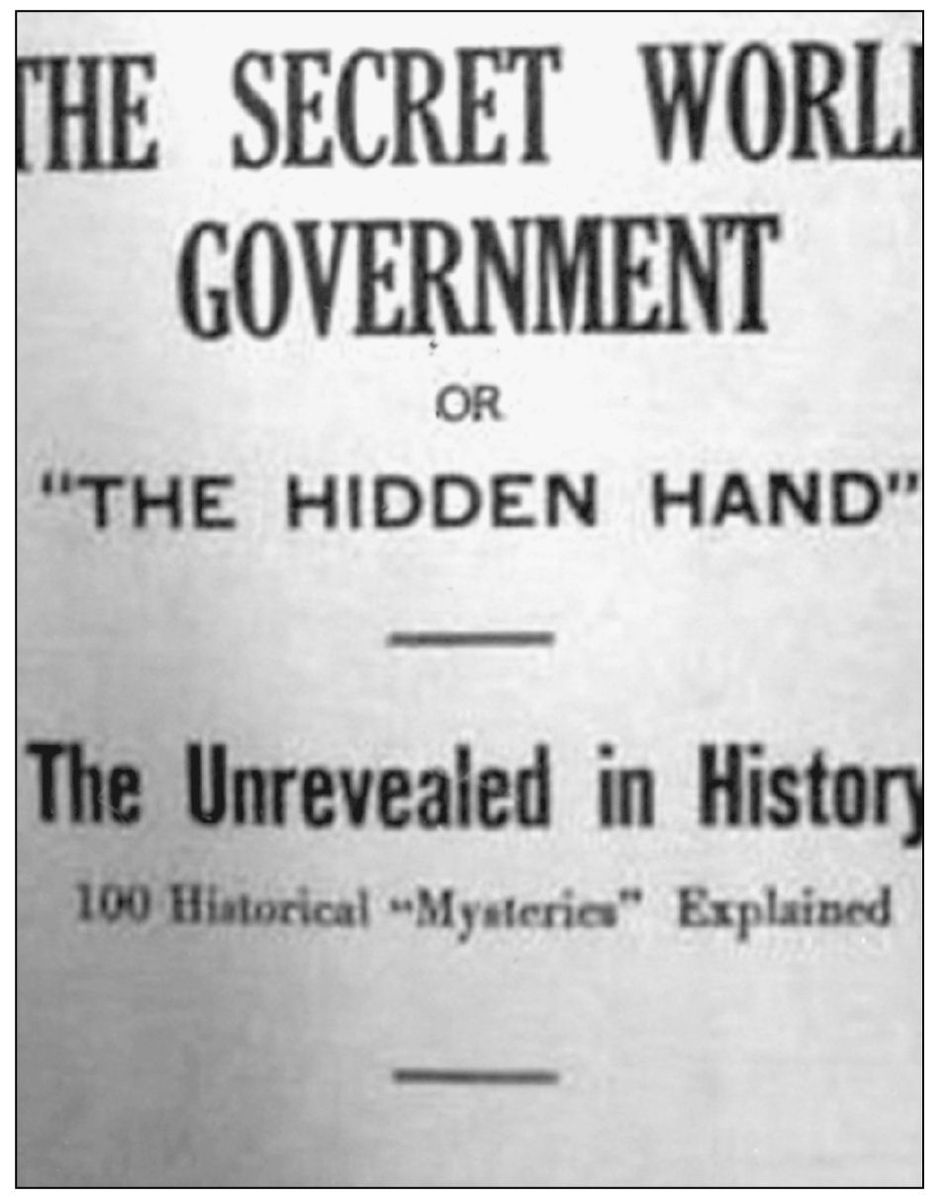
COUNT ARTHUR CHEREP-SPIRIDOVITCH. In December 1920, mysterious Russian émigré Count Arthur Cherep-Spiridovitch came to the United States on board the SS Aquitania. He was briefly detained at Ellis Island, as he had been passing out anti-Jewish pamphlets during the voyage; efforts to exclude him on various pretexts were overruled. Cherep-Spiridovitch (1858–1926) was certainly a bitter and confused man when he settled in New York. The things to which he had dedicated his life had fallen before his shocked eyes: the imperial Romanoffs, the aristocracy, and all the traditions. He grasped at the easiest explanations, one of which was the age-old prejudice against Jews. He published his views in The Secret World Government or “the Hidden Hand” just before he was killed from gas poisoning. The count, a Polish Catholic, was formerly a general in the Russian army.
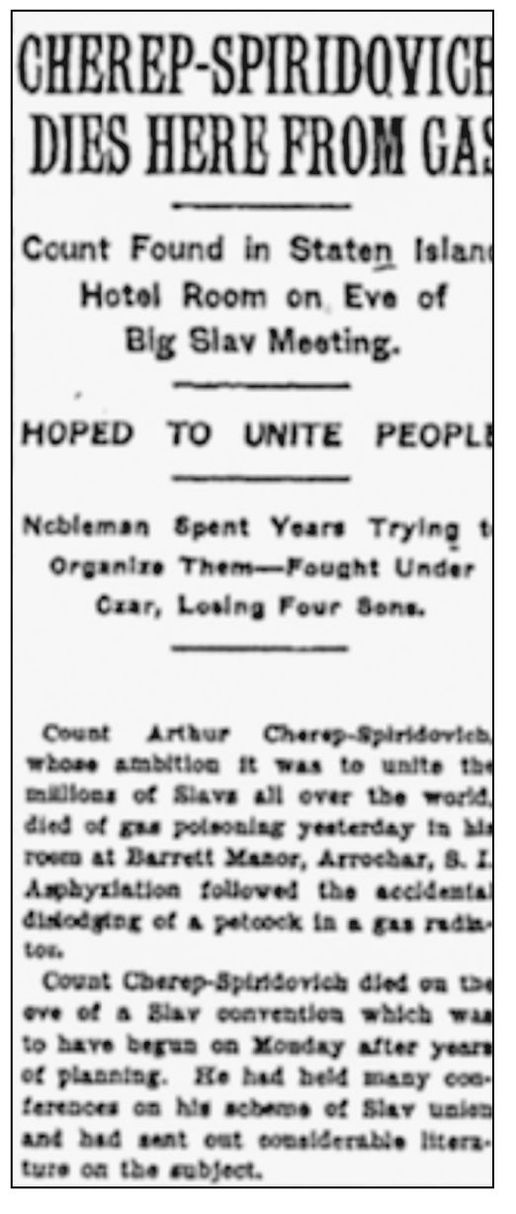

HANNAH CHAPLIN. In 1921, Charlie Chaplin’s mother, Hannah Chaplin, came to the United States but was detained at Ellis Island because of her mental state. The former star of Gilbert and Sullivan operettas had suffered shell shock during the Zeppelin bombing raids over London. At last, Charlie’s bond guaranteeing her care was accepted, and she went to Hollywood. However, the Department of Labor periodically tried to deport her from the United States, as her “temporary” visit was not thought to help in her recovery. The department gave up on her case, and the old actress died in Glendale, California, in 1928.

“PRINCE” MICHAEL ROMANOFF. The complicated and peculiar case of the famous eccentric who passed himself off for years as Prince Michael Romanoff is remarkable, to say the least. The debonair and elegant man with an aristocratic air and Oxford accent was originally a poor Jewish immigrant orphan named Harry F. Gerguson. (Hershel Geguzin in Russian). As Prince Romanoff (1890–1971), he was supposed to be one of the few imperial Romanoffs to have survived the Bolshevik Revolution. In 1932, Romanoff stowed away on a French steamer and was turned in to immigration officers at Ellis Island. But before they could deport him, he escaped. The search for him in Manhattan finally bore fruit, and he was once again in custody. But his charming eccentricity and madcap conduct endeared him to the public, and he was helped out of the tangle he was in and released. He was straightway booked into vaudeville. But his road was still a rocky one. It was not until he made his way to California that his fortunes would begin to turn.


ROMANOFF’S. In 1936, Michael Romanoff arrived in Los Angeles, and in 1939, thanks to the help of several film stars who embraced Romanoff as one of their own, he opened Romanoff’s, an exquisite restaurant. For almost 30 years, the “Prince’s” would be a favorite of the stars, including Ronald Colman, Myrna Loy, James Cagney, Charlie Chaplin, Humphrey Bogart, W. C. Fields, Robert Benchley, and Edward G. Robinson.

FAN S. NOLI. In 1932, Bishop Fan S. Noli (1882–1965) was briefly detained at Ellis Island. He spent the remainder of his life here, and, although still concerned for Albania, he devoted much time to scholarship, authored several books, and was an authority on Byzantine music. At the time of his death, he was an archbishop.

ANNA SAGE. The “Woman in Red” who betrayed John Dillinger to the FBI was none other than Romanian immigrant Anna Sage (1889–1947). She came to the United States as Anna Ciolak, wife of Mihai Ciolak in 1919, and she went back to Romania in 1923 or 1924 to visit her mother, Marta Cumpanas. She returned on the Majestic on September 2, 1924. She soon left her husband and became a brothel keeper. Later she temporarily gave up this life and married Alexander Suciu; they anglicized their name to Sage. She left him and went back to the brothel. When the INS notified her that they were taking deportation proceedings against her, she contacted the FBI and offered to help them get John Dillinger in exchange for money and assistance to prevent her deportation. She and another woman arranged to go with Dillinger to Chicago’s Biograph Theatre in July 1934. That night, the FBI were ready, and when the suspicious Dillinger went for his gun, they shot him dead.
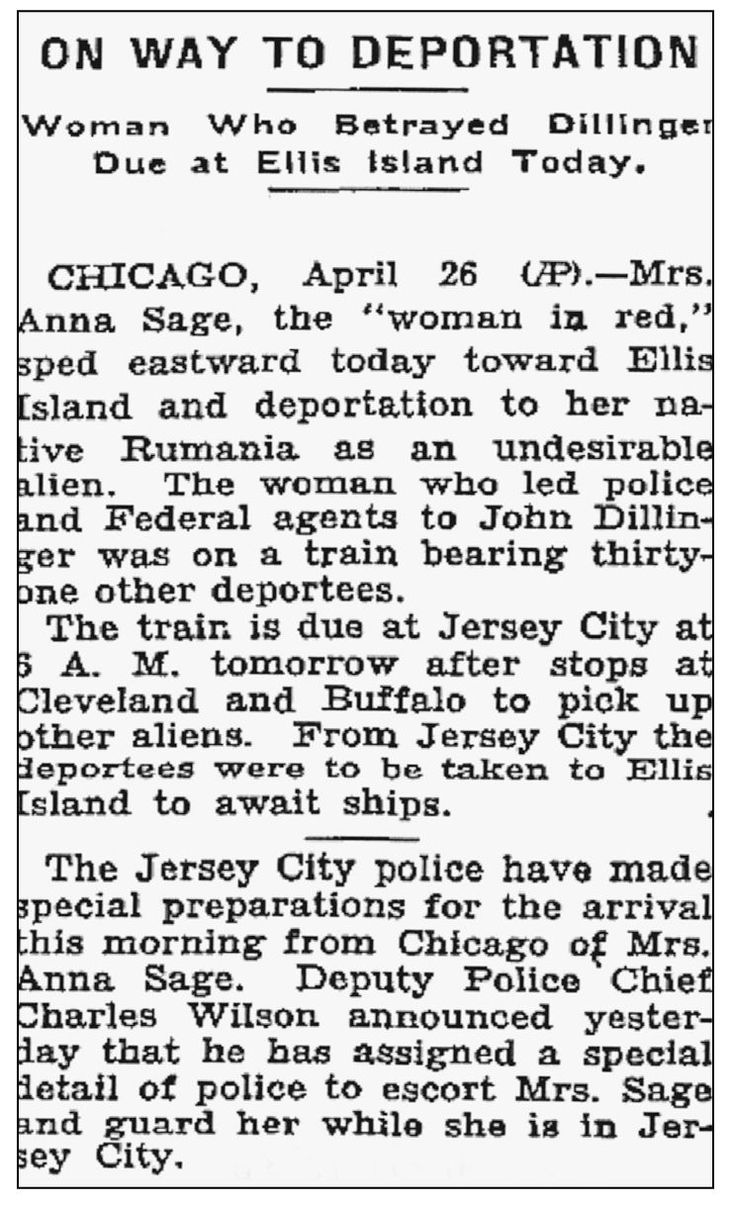
THE LAST OF THE WOMAN IN RED. Anna Sage was immediately placed under security. She was only referred to as the “Woman in Red.” Soon though her name was finally given to the press, which was clamoring to know all about her. She was paid $5,000 reward (she had expected more), but nothing was done about her pending deportation case. In spite of appeals to the INS and Department of Labor, she was arrested in 1936 and put on the deportation train that halted in Chicago, before proceeding to New York. Anna Sage arrived at Ellis Island, where final arrangements were made for her departure. She was locked in her stateroom on board her steamer and soon was back in Timişoara, Romania. In spite of her vows, she never returned to the United States.


RICHARD KREBS, ALIAS “JAN VALTIN.” Another unusual case was that of the German double agent Richard Krebs, who defected to the United States in 1939. Krebs (1905–1951) became a Soviet spy in the mid-1920s. After the rise of the Nazis, he joined the Gestapo but remained in the service of the USSR. But the Soviets mistrusted him, and before they could send him to Russia, he fled to the United States. In 1940, he published his reminiscences, Out of the Night, under a pseudonym, Jan Valtin. It was quite a success. On the United States’ entry into the war, Germans living in the United States were proclaimed alien enemies, and the FBI arrested all Germans with suspicious connections. Krebs was an obvious choice for investigation and was taken to Ellis Island, where he remained for more than a year. After his release, he complained that his health had broken while in detention on the island. Krebs was also the author of Children of Yesterday and three novels, Bend in the River, Castle in the Sand, and Wintertime.

FRITZ KUHN. Potentially divided loyalties sometimes create an atmosphere of suspicion toward immigrants, and although such feelings are almost always unfounded, in the case of Fritz Kuhn, it would have been justified. Kuhn (1896–1951) immigrated to the United States from Germany in 1928. Inspired by the rise of the Nazis in his homeland, Kuhn became active in pro-Nazi organizations and, in 1936, became leader of the German American Bund. Kuhn aspired to be America’s führer and strengthened and expanded the organization and aggressively raised its public profile. At the outbreak of war, the FBI arrested most members of the bund, and Fritz Kuhn was sent to Ellis Island; from there he was interned for the remainder of the war at a camp in Crystal City, Texas. In 1946, he was sent back to Ellis Island and from there deported to Germany.

C. L. R. JAMES. The historian and author C. L. R. James (1901–1989) was a native of Trinidad and moved to England and, in 1938, to the United States. The Marxist scholar apparently was not detained for his political views, but the charge simply was that he had overstayed his visa—by 10 years. He was arrested and taken to Ellis Island in June 1952; there he remained until October. In that time (he had made an appeal to stay in the country), he wrote a book in which he described his detention on the island and his treatment there. The book was published in 1953; its title is Mariners, Renegades and Castaways. All the same, James was deported to England. Pictured is a copy of the first printed edition of the work.


GEORGE VOSKOVEC. The Czech actor George Voskovec (1905–1981) came to the United States in 1939 and, in 1946, returned to Prague to reopen his theater. But when the Communists illegally seized power in 1948, he left for Paris. On May 16, 1950, on his return to New York, he was met by immigration agents and taken to Ellis Island. Someone accused him of having worked with the Communists while in Czechoslovakia. This charge he denied and got a number of reliable witnesses to testify on his behalf. But in December, the INS ordered his deportation. Desperate, Voskovec appealed the decision. The Justice Department in Washington agreed, and he was released on April 2, 1952, after 10 months on Ellis Island. On leaving, he gave the New York Times reporter his impression of Ellis Island: “I want to go on record that it’s a disgusting place—a prison.” In December 1955, a dramatized version of Voskovec’s experience was presented on television. It was called I Was Accused, and the players were Voskovec, Hurd Hatfield, Alexander Scurby, and Cameron Prud’homme.